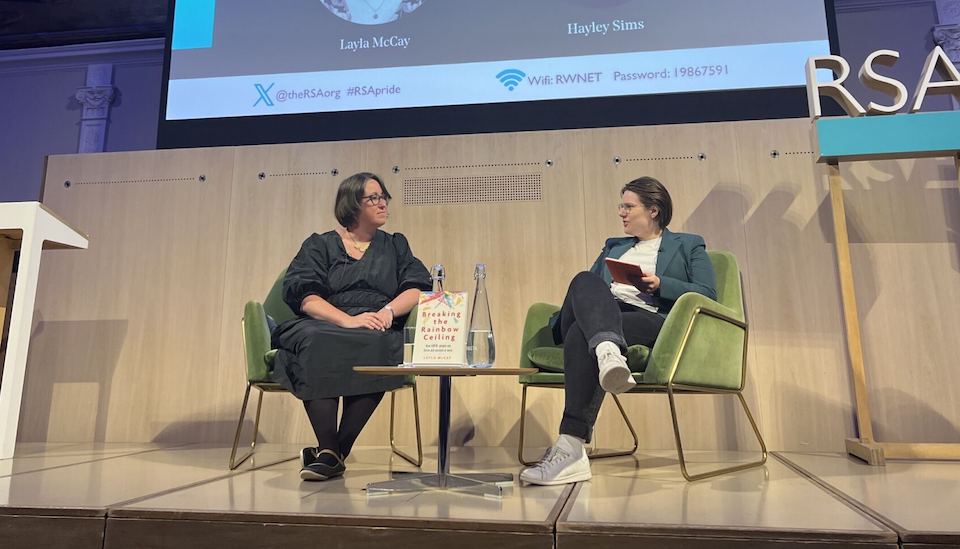It is no doubt a personal failing, but I have never managed to build up much enthusiasm for theories of leadership and organisational change. True, I adhere to cultural theory as a way of thinking about sources of power and models of change, and I also am enthusiastic about the idea of anti-heroic leadership as expounded by Richard Wilson is his recent book, but these are broad orientations rather than prescriptive methodologies. It may simply be rationalising my inability to stay awake past the first chapter of most books on organisational leadership, but the complexity and reflexivity of social change seems to me better served by a compass than a map.
However, I find myself booked in tomorrow to give two talks about leadership and change with the expectation that I use the RSA as some kind of case study. It is gratifying that Action for Children and ACEVO think there is a success to be described (it may just be they’ve heard I am cheap and do jokes), but I will be admitting from the outset that my seven years here provide as many stories about what can go wrong and of how hard change can be as it is does exemplars of best practice. Nevertheless I am going to try out one way of conceptualising change; not so much as a description of what we have been doing here but more as a guide which might have helped me do things better had I used it from the start.
My suggestion is that purposive organisational change can be seen to have four stages: ‘basic inquiry’, ‘conventional alignment’, ‘existential inquiry’ and ‘transformational alignment’. As this implies, the four stages comprise two pairs at lower and higher orders of ambition.
‘Basic inquiry’ describes the stage – often following the appointment of a new leader – when essential questions are asked about the organisation’s purpose, performance and fitness for purpose. This stage precedes change and so there is in our accelerating world a tendency for leaders to do it too quickly or superficially or to treat it as a process of confirming initial prejudices. Patience and humility are useful attributes if the leader is really to understand why it that certain patterns of thinking, acting and performing have become embedded: things which look functional may reveal themselves to be less so and things which seem otiose might on closer inspection have a deeper purpose which needs to be appreciated even if not preserved. It’s probably best not to emulate my first RSA staff meeting in which I said in nearly so many words ‘you’re all a bit rubbish but don’t worry I’m here to save you!’.
‘Conventional alignment’ describes the process whereby the leader tries to bring some clarity to the organisation’s purpose and aims and then seeks to align the organisation with those objectives. This is partly about desisting from things which don’t align and enhancing those which do, but also about capacities and competencies. An example of this for the RSA was the processes of engagement, conflict, investment and trial and error which followed the insight that the RSA Fellowship wanted to shift from being largely a social and recreational club to an integral part of delivering our charitable mission.
This stage will tend to lead to a substantial turnover of staff, indeed it is often what people think of when they talk about organisational change. It can be slow and difficult and when it has been at least partially accomplished there is an entirely understandable tendency to feel the job is done.
‘Existential inquiry’ describes the point at which an apparently well-functioning organisation comes to see that it is not in fact standing for or achieving the change (relevant to its mission) it most wants to see in the world. This is a deeper moment of reflection and calls for leaders to identify a profound challenge even though the rest of the organisation feels it has only just gone through a painful process of becoming fit for purpose. ‘But’ the leader says ‘for what purpose’?
An example here might be the head teacher of a school which has gone through basic inquiry, found out why it is not ‘good’ or ‘outstanding’ and has done the tough things in the conventional alignment stage necessary to achieve that status. But then, after a summer break in which staff members have celebrated reaching the safe harbour of OFSTED approval, they return to a head who asks ‘we may have the seal of approval, but can we really say that we are transforming the life chances of pupils and inculcating a deep love of learning?’ At issue here is not just what the organisation does but its culture, ethic and imagination.
The RSA is in this stage right now as we undertake a strategic review based on the conviction that we should measure success in terms not of outputs or organisational health (in which terms we now do well) but substantive real world change.
‘Transformational alignment’ is a stage to which I aspire but which I can’t say I have ever managed to attain. It is the point at which the organisation does not need to be changed, nor much led in the conventional sense, because its culture is profoundly attuned with a powerful sense of purpose, one which not only drives high performance but creates an organisation-wide process of continuous self-improvement (which will, by the way, involve the ‘clumsy’ coming together of hierarchical, solidaristic and individualistic power). This stage should be what leaders aspire to. If they achieve it they should enjoy it to the full if only because changes in context or fortune or the complacency and overreach promoted by success mean that sooner or later it will end.
The obvious questions posed by this schema are (and having written a thousand words I suspect I am by now talking to myself): why is it necessary to go through two loops, can’t one go straight to ‘existential inquiry’; and, how can I reasonably encourage leaders to pursue a state of ‘transformational alignment’ when I can’t actually say I have created or experienced it myself?
In reply to the first, existential inquiry is too profound and difficult to be accomplished while an organisation is failing to deliver on its narrower output goals. Indeed existential questioning may be a bad idea when the often thankless heavy lifting of ‘conventional alignment’ is under way.
The second question is harder: all I can say is that I have from time to time had that sense of deep conviction of purpose combined with an openness to continuous inquiry and improvement, but it has been around one off projects or particular moments not at the level of a whole organisation.
Anyway, to get through the hard graft of organisational change don’t we need to believe there might be something rather wonderful –albeit only temporary - at the end of it?
Related articles
-
Prosperous Places: creating thriving communities
Tom Stratton
With regional growth at the top of the agenda, it is vital that we create thriving communities across economic, social and natural perspectives. Prosperous Places is a suite of interventions aimed at responding to the unique ambitions and challenges of places.
-
Pride interview: Felipe Tozzato
Deborah Ajia
The commercial photographer and RSA Fellow explains what Pride means to him, the importance of courage, making friends through rugby and why being gay is his superpower.
-
Let's smash the Rainbow Ceiling
Ben Oliver
Reflecting on Layla McCay’s recent RSA talk, Ben Oliver offers five ways for employers to create a positive culture for their LGBTQ+ staff that benefits both the individual and the organisation.




Be the first to write a comment
Comments
Please login to post a comment or reply
Don't have an account? Click here to register.